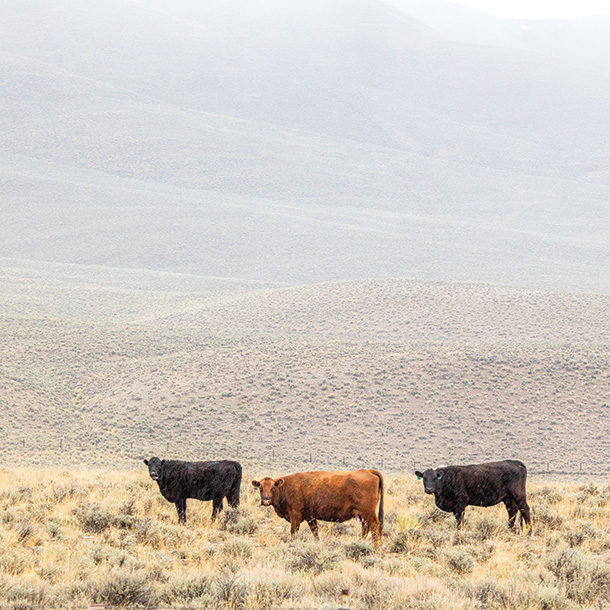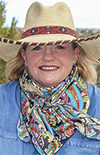When’s the very best time to plan for a drought? That answer is simple: When it is raining. And it’s raining – again. Parts of Texas have experienced bountiful rains this year. Far-west Texas remains dry, but we hope their turn is coming. In contrast, Montana and points north are bone dry. El Nino is showing off. When Texas had a historic drought 10 years ago (La Nina-influenced), my family in Montana made more hay and had more grass than they knew what to do with.
Challenges for ranchers abound, as usual. Our churches have signs out front: “Pray for Rain” or even “Pray for Sunshine” on the Gulf Coast. The coffee shop talk centers on the precipitation or lack thereof. Ranchers are eternal optimists, or we’d never be in this business. Like my beloved Texas Aggie football team, we say to ourselves and anyone else who will listen, “There’s always next year.”
What if we got serious about planning for drought? Utilizing rotational grazing to our advantage? Too many of us wait until the eleventh hour, hoping for rain, damaging our pasture resources, avoiding the tough and often emotional decisions. “Do we sell out?” “Those cows are my special genetics; I cannot sell them.” “Have you seen the price of hay and feed?”
A drought plan in place is the easiest way to remove emotion from those tough decisions. I was on the Gulf Coast a few years ago with some friends who have a lease operation, and it had been critically dry. The father-son team had a plan. I could see the hurt in the son’s eyes. They had built their herd up slowly and were on their way to gaining access to more lease ground in the coming years. Selling cows seemed like a setback. The father, wiser and more experienced, reassured his son that though it was tough to sell, it was the right thing to do.
We have all heard the phrase, “He’s married to those cows.” It surely feels like that sometimes. The time and money invested alone makes it something of a “marriage.” I would submit that we need to be “married to the land.” That land is a much more enduring resource and will support generations to come. Despite how much you love your favorite cow, she has a limited life span and, at one calf a year, she can influence your herd for years to come, but not as much as the land will influence your future profitability.
A drought plan can come in many shapes and sizes. Like all things grazing, there is no recipe or cookie cutter mold that fits every operation, every family. Here are a few ideas.
Trigger dates
At the simplest, it can be based upon when you get the bulk of your moisture. If you are more than 25% below average on, say, April 1 or May 1, it is probably time to adjust stocking rates by 25%. Or 50%. Have a set date. Look at your area’s precipitation cycles and choose that date. And stick to it. That way when the date rolls around, unless there’s a big red blob on the radar headed straight for you, the decision has been made.
You made the decision when you weren’t staring down the TV screen with no precipitation chances in the next two weeks, running out of forage and stressed. You are much more likely to get through a tough time with less stress because, very simply, you and your family had a plan.
Action plan
Beyond trigger dates set at precipitation levels, there needs to be an action plan. No two plans will look alike. But your rangeland, pastures and family need to be ready to take action. Or you wind up right back in the waves of emotion that making difficult decisions tends to exacerbate.
One rancher I know has his cattle sorted by the “A” team and the “B” team. The B team may have calved late, be on the older side of things, had other challenges bringing a calf to weaning. You can guess which ones will be cut from the ranch when the resources run short.
Flexibility
Having a few stocker steers or heifers is an easy way to add flexibility. Putting “wheels under them” is simple enough and may allow you to keep your core cow herd – the gals you are married to.
Leasing out a portion of your property may also bring flexibility. Terms of leases can be sticky and must be clear. You cannot simply dismiss someone without some prior arrangement, however. To put the boot on the other foot, you may have access to some lease ground or cropland to be able to reduce grazing stress on your range or pasture by moving livestock. The challenge there is: If you are facing drought, so is your neighbor.
Seldom is it financially feasible to feed your way out of a drought. If you are considering that, I urge you strongly to put a pencil to it, a sharp pencil. Think long and hard about finding a way to replace those cows you are certain you need to keep at all costs. Dr. Robert Wells of Noble Research Institute has a slide I use from time to time in presentations. It shows a field of round bales, but some of the bales are rolls of $100 bills. Do you want to be feeding rolls of $100 bills to your livestock? When you think about it that way, it does cause a bit of a pause.
Rotational grazing
How can rotational grazing help with drought? Your plants are stronger, have better root systems. They can survive. Simply the fact that you have available forage you haven’t been grazing is like having round bales … standing forage or standing hay, so to speak. Chances are you have pastures to move into, unlike the folks who are continuously grazing and have nowhere to go. A stockpile of standing forage. Maybe your rotations will be quicker than you had hoped. But having forage to move onto is a game-changer.
The point is to have a plan. A plan you made when the banker was not breathing down your neck and before the TV weatherman offered little encouragement. A plan made when you were looking out the pickup window at green grass. Maybe sitting in front of the fire in the dead of winter with yet another wet snowfall accumulating quickly. A plan you made when you were not being pushed to make a destocking decision or facing a huge feed bill. It will rain someday. Maybe not before you must enact that plan, but someday. Just like the Boy Scouts, your motto should be to “Be Prepared.”
Then what? It is raining again. The drought is in the rearview mirror. Was all that rotational grazing worth it?
My friend Frank Price of Sterling City, Texas, says, “The better it gets, the faster it gets better.” He is right. You will reap the benefits of your rotational grazing system in leaps and bounds when precipitation conditions are favorable. On your quest to grow more leaves and create a more resilient, healthy landscape, these times of bountiful precipitation will dramatically improve your range or pastures. And you will be able to stock more cattle while still leaving your pastures and soils healthy and thriving. You will be ready for the next drought and the one after that.
As I always say, if grazing management was easy, they’d call it rocket science.








